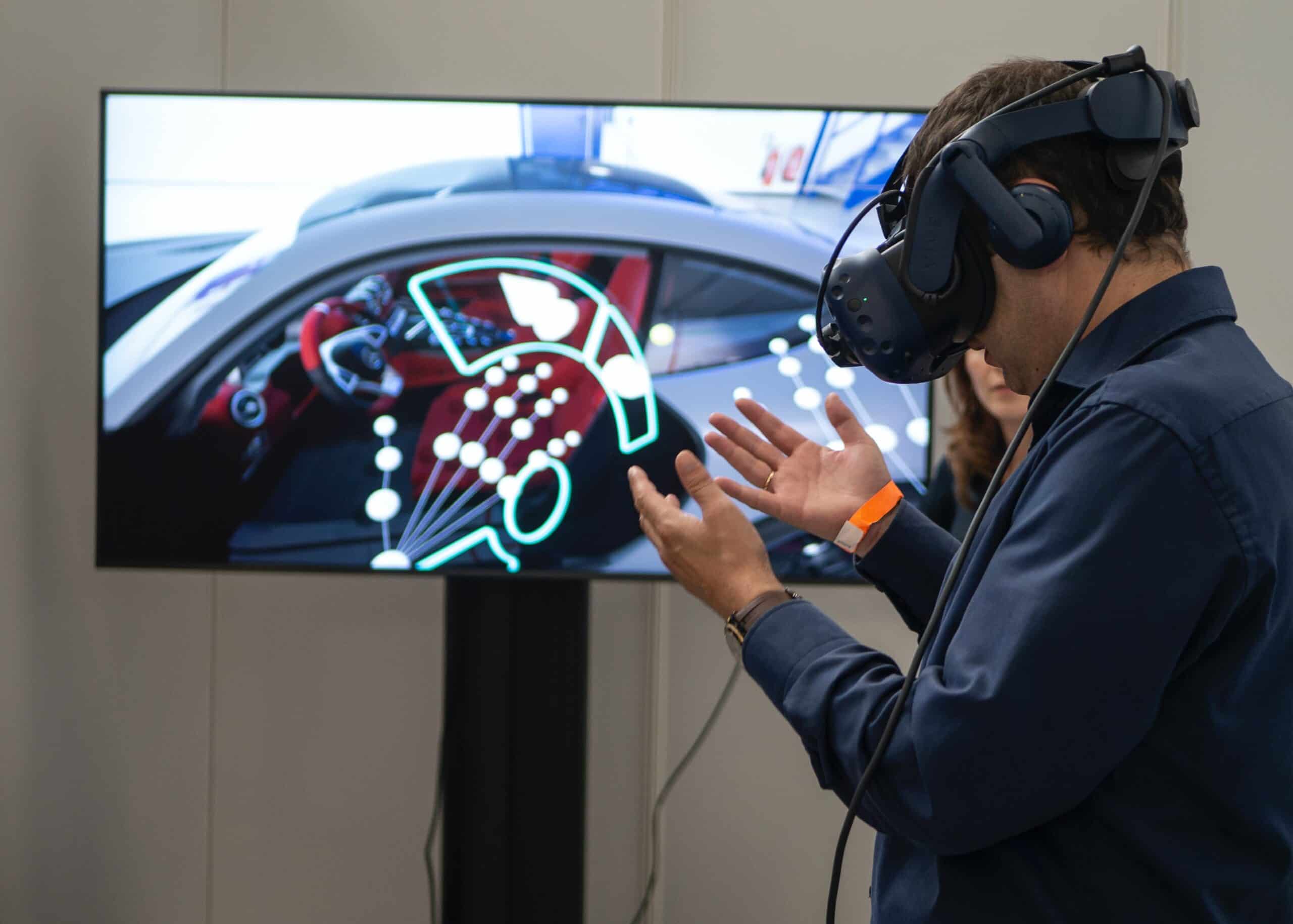
Make talent quality your leading analytic with skills-based hiring solution.

AR and VR Developers or Augmented Reality and Virtual Reality Developers are not just used for gaming anymore. The multi-faceted industry is a ‘game changer’ indeed for a variety of industries.
Wendy Gonzalez, CEO at Sama excitedly says the adoption of AR and VR technologies is no longer an option, but a necessity to close the gaps between physical and virtual spaces.
Along these lines, BCG Consulting informs that the adoption of AR and VR is an agile, launch-and-learn process adopted in several phases. Therefore many businesses link strategy, technology, and execution with AR and VR.
AR and VR are used interchangeably. But in reality, an AR developer works with mobile apps for creating a virtual reality experience (like Snapchat filters).
On the other hand, a VR developer creates a whole new simulation experience for users to see through a device (like PS4).
In most cases, an AR and VR Developer must be familiar enough to work with video game engines (like Unreal or Unity) besides constructing 3D settings.
They also have to be proficient in programming languages like C++, C#, JavaScript, and Swift apart from developing and upgrading the software.
If you know why Facebook changed its name to Meta, then you are one step closer to understanding the exploding market for AR and VR.
As per Allied Market Research (IDC), the AR/VR industry is set to achieve $454.73 bn by 2030 with an estimated CAGR of 40.7% in the forecasted period. The report also says that the rise of the mobile gaming industry and internet connectivity has propelled the growth of the global AR and VR industry.
Additionally, the increase in FMCG, particularly consumer electronic devices is also fanning the industry’s growth.
AR and VR along with MR (Mixed Reality) technologies are rapidly finding their spot across many industry verticals. Prominent tech companies are investing billions of dollars into AR and VR initiatives.
Burning Glass reports that careers in AR/VR can grow by 31.7% in the next ten years.
As per Glassdoor estimates, the national average of an AR and VR Developer in the USA is $41,354 per year with an added compensation between $301 – $63,881.
Glider’s recruitment platform is built on the mission, of “competency over credentials”. This way, you can make the most of the hiring assessments through a structured and data-driven candidate-evaluation process.
Access 2,000 pre-built assessments covering over 500 skills with 250,000 questions, all validated by 2,000 SMEs including this for the AR and VR Developer role
Go ahead and spotlight your AR and VR Developer with Glider AI today!
You can always write to us at info@glider.ai to help you access the hiring resources

Introduction Technical roles are some of the hardest to fill. The process is a landmine of recruitment challenges. HR teams often find themselves under-resourced and struggling to find suitable talent, while engineers waste too much time interviewing candidates who don’t meet the necessary qualifications. Meanwhile, high-quality candidates get frustrated by slow and inefficient hiring processes and […]

What is QA and Testing? Quality Assurance (QA) and testing are integral processes in software development aimed at ensuring the reliability, functionality, and usability of applications. QA involves establishing standards and procedures to monitor and improve the software development lifecycle, focusing on preventing defects and identifying areas for optimization. It encompasses various activities such as […]

Whether hiring for an entry-level web developer position or a web architect, asking the right JavaScript coding questions lets you assess the candidate’s depth of knowledge in core JavaScript concepts, problem-solving skills, and understanding of modern JavaScript practices. More than identifying which people in your pool of applicants can answer technical questions, these JavaScript interview questions also reveal who […]